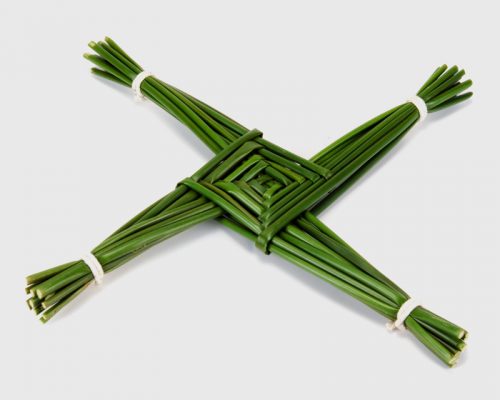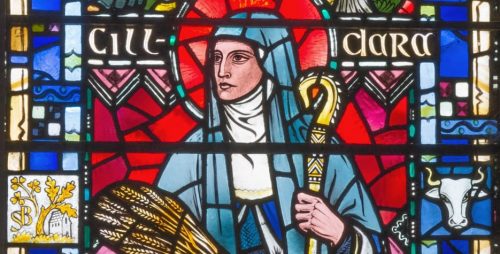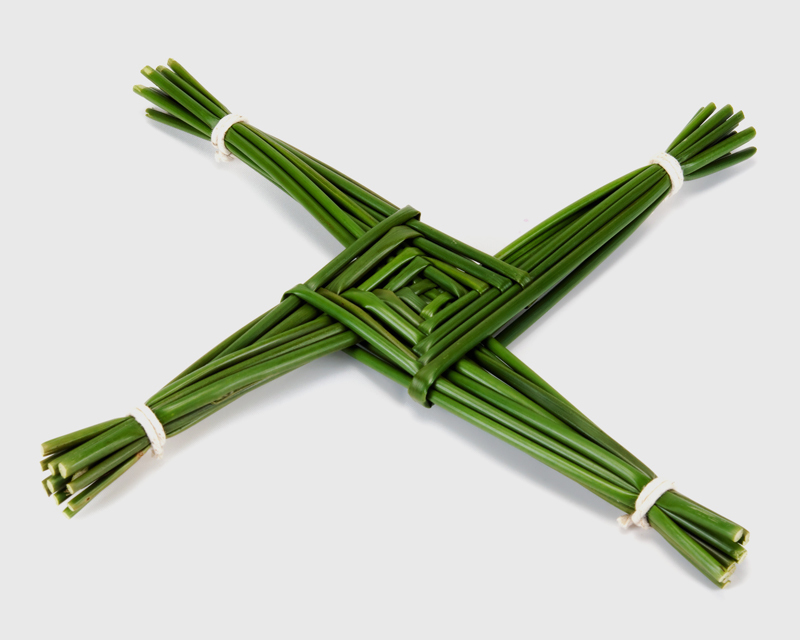In Ireland, we have been blessed with a brand new Bank Holiday to celebrate St. Brigid – Ireland’s only female patron saint. The bank holiday will be held annually on the first Monday in February. In 2023, the Bank Holiday will take place on Monday, 6th February.
Thanks to The National Museum of Ireland – www.musuem.ie for the following information on St. Brigid.
“What many people may not know is that the feast day of this 5th century saint was one of the most important days of the year for our rural ancestors.
With its origins in the Celtic festival of Imbolc, St Brigid’s Day was the festival of fertility and marked the beginning of spring in Ireland. It signalled an end to the darkness of winter and ushered in a new season of hope and growth.
As such, our rural ancestors celebrated the day with a festive meal and a host of customs, all aimed at securing St Brigid’s protection and promise of new life and abundance for the year ahead.
1. Marking the Quarter Day
St Brigid’s Day was one of the ‘quarter days’ celebrated by our ancestors. These days marked a transition from one season to the next. St Brigid’s Day (February 1) signalled the beginning of spring; Bealtaine (May 1) was the start of summer; Lúnasa (August 1) brought in the harvest season and Samhain (November 1) was the beginning of the dark season.
Irish festivals were always celebrated on the eve of the day itself because this was considered a very liminal time – a time when the otherworld was very close so appeals for protection and blessing were extra effective.
2. A festival of fertility
St Brigid’s Day has its origins in the ancient Celtic festival of Imbolc and it is the festival of new life and fertility. It was a time to look forward to brighter days, warmer weather, new growth on the land and the birth of farm animals. It was very important to seek protection and blessings for the family, home, crops and animals at this time.
3. The festive meal
No celebration would be complete without a festive meal. The traditional meal at St Brigid’s Day was a supper of potatoes and freshly churned butter. Often, Colcannon was made by adding chopped cabbage. Apple cakes or barm brack followed with tea. The family would eat this meal together and make their St Brigid’s crosses.
4. St Brigid’s Crosses
People believed St Brigid crossed through the land on the eve of her feast day and gave blessings and protection to homes and farms where crosses were hung in her honour.
There were many regional styles and variations throughout Ireland with different materials used. Families would recite prayers, bless the rushes or straw with holy water and then each make the crosses. They would hang them over the door and around the home to welcome St Brigid. Many households kept the cross each year in the under-thatch of the house and you could tell how old a house was or how long the family had lived there by the number of crosses in the roof!
You can learn how to make your own St Brigid’s Cross in this step-by-step video tutorial with Tom Doyle from the Museum’s Education Team.

5. Protecting crops and livestock
Leftover material from making crosses might be sprinkled on the land or incorporated into spancels and bedding for animals. Crops were often incorporated into the crosses themselves such as a potato or a sheaf of ripe corn. Last year’s dried crosses might also be crushed and sprinkled on the land. Crosses were hung in the byre as well as the home, so St Brigid would provide protection for animals as she passed.
6. A gift for newlyweds
It was common to give a St Brigid’s Cross as a gift to those with a new home, and to newlyweds, to offer protection and to wish the couple well in starting a family.
7. The Brat Bríde
Some households would leave out a small piece of cloth or a ribbon on the windowsill, called a Brat Bríde or Ribín Bríde. As St Brigid crossed through the country on the eve of her feast, she would touch the Brat Bríde, endowing it with special curative properties to ward off illness and pain in both humans and animals. It was kept safe throughout the year and used for healing or incorporated into clothing to offer protection to the wearer.
8. Biddy Boys
Bands of men or children dressed in straw would often go from house to house with ‘Biddy’, an effigy of St Brigid, collecting for a party in her honour while reciting a rhyme.
‘Here is Brigid dressed in white. Give here a penny for this dark night. She is deaf, she is dumb. For God’s sake, give her some.’
The Biddy Boys were especially popular in Kerry and elaborate processions also took place.
9. St Brigid’s Girdle
In the west of Ireland, the biddy boys would carry a large straw belt called a Crios Bríde or St Brigid’s Girdle. People would step through the girdle and pass it over their bodies while saying a prayer to St Brigid in the hope of gaining her protection from illness for the year ahead.
10. St Brigid’s Well
There are many holy wells throughout Ireland dedicated to St Brigid and people visited these wells on the eve or on the feast day itself. Often they left a ribbon or a votive offering at the well so that their intention would be remembered. Water collected from a holy well at this time was believed to be particularly blessed.”

